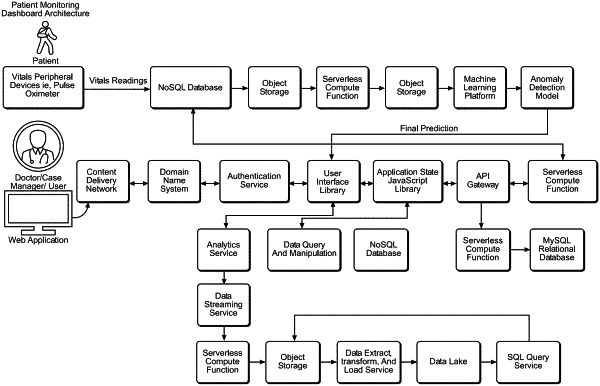| CPC H04L 63/1425 (2013.01) [G06N 5/043 (2013.01); G16H 40/67 (2018.01); G06N 20/10 (2019.01)] | 20 Claims |

|
1. A secure intelligent networked architecture for real-time precision care plan remote support comprising:
a secure intelligent data receiving agent having a specialized hardware processor and a memory, the secure intelligent data receiving agent configured to automatically receive a digital data element over a network from a wireless transmission-equipped peripheral device, the digital data element representing an output in response to a predetermined plan;
the secure intelligent data receiving agent configured to perform a risk stratification for a patient's capacity for self-managed care; and
the secure intelligent data receiving agent configured to process the digital data element and configured with logic for anomaly detection, the logic for the anomaly detection being executed by a machine learning model comprising:
at least one support vector machine classifier comprising a plurality of support vectors, the at least one support vector machine classifier configured to detect anomalies by classifying outlier data;
a plurality of input training vectors determined from one or more outcomes from the anomaly detection;
a plurality of input measurements over a number of days;
support vector classification finding a hyperplane, the plurality of support vectors representing data points closest to the hyperplane and defining a decision boundary;
a kernel transforming the plurality of input measurements that support the finding of the hyperplane;
parameter c, a regularization parameter in the support vector classification that controls a trade-off between maximizing a distance between the hyperplane and a nearest data point of a class; and
the plurality of input measurements and corresponding predicted outcomes tested for a predictive performance of the logic for the anomaly detection.
|